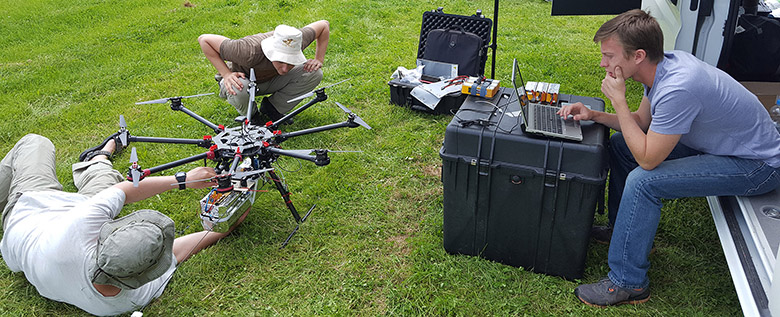
A Purdue University agronomy professor and an aeronautical engineering technology student joined an international team of researchers in Germany this summer to explore a new use for unmanned aerial vehicles - known as UAVs or drones - in meteorological research.
The project, funded by the Purdue Climate Change Research Center, is one of the first to use UAVs to explore the nocturnal boundary layer, a stable atmospheric layer that forms during nighttime hours when the ground is cooler than the air. While daytime airflow is mostly predictable and measurable, nighttime airflow is poorly understood and difficult to measure, said Richard Grant, professor of agronomy at Purdue.
Evan Flatt, a senior in aeronautical engineering technology, customized an octocopter-style UAV – a vehicle with eight rotors to provide lift and forward motion – to carry gas sensors. He also programmed the researchers' flight plans into the control software and collaborated with other team members to make sure everyone stayed safe.
Read the full story from Purdue News Service.
